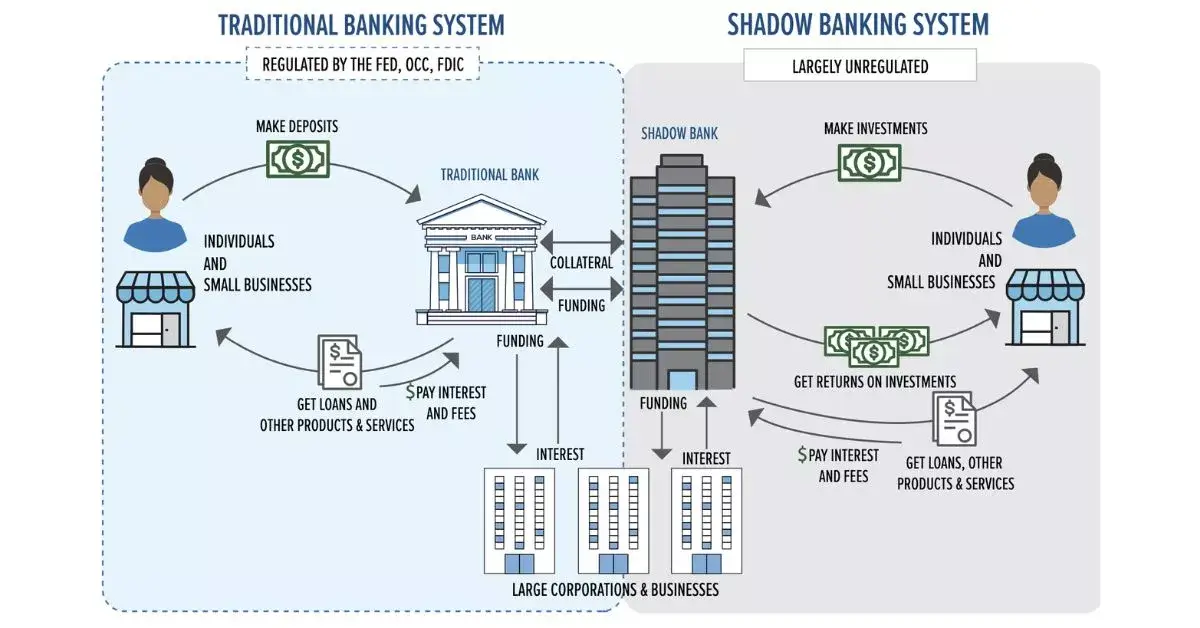In the intricate world of finance, there exists a realm often spoken of in hushed tones – shadow banking. It’s a term that sounds mysterious, conjuring images of secrecy and intrigue. But what exactly is the shadow banking system, and why does it matter? Let’s delve into this financial phenomenon to unravel its complexities.
Defining the Shadow Banking System:
The shadow banking refers to a diverse set of financial activities and institutions that operate outside traditional banking regulations. These include hedge funds, money market funds, non-bank financial institutions, and more. Unlike traditional banks, they don’t hold banking licenses and often operate in the shadows of the formal banking sector.
Key Components:
- Money Market Funds: These are mutual funds that invest in short-term debt instruments. They are a significant part of the shadow banking, offering short-term financing to various entities.
- Securitization: The process of bundling loans into securities that can be sold to investors. Mortgage-backed securities are a classic example.
- Hedge Funds: Investment funds that employ various strategies to generate high returns. They often engage in complex and high-risk transactions.
Shadow Banking System’s Role in the Economy:
The shadow banking system plays a vital role in providing credit to the economy. It often serves borrowers who might not qualify for loans from traditional banks. By diversifying the sources of credit, it contributes to financial innovation and can enhance market liquidity.
Regulatory Challenges:
One of the primary concerns with the shadow banking is its lack of regulation compared to traditional banks. This lack of oversight can pose systemic risks, as was evident during the 2008 financial crisis when certain shadow banking activities amplified the impact of the crisis.
Impact on Global Financial Stability:
While the shadow banking fosters financial innovation, its rapid growth can create vulnerabilities. If not properly managed, these vulnerabilities can lead to financial contagion, affecting not only specific institutions but the entire global financial system.
Current Regulatory Efforts:
In the aftermath of the 2008 financial crisis, regulatory bodies across the world intensified efforts to bring the shadow banking system under tighter supervision. Stricter regulations aim to mitigate risks and enhance transparency, ensuring a more stable financial environment.
The Future of Shadow Banking:
As financial landscapes continue to evolve, so will the shadow banking system. The key lies in balancing innovation and regulation. Striking this balance will be crucial in harnessing the benefits of the shadow banking while mitigating potential risks.


